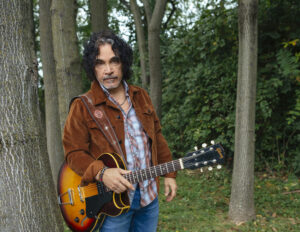John Oates is one half of the best-selling duo of all time, Hall & Oates, as well as an accomplished solo artist. He is a member of the Rock and Roll Hall of Fame, The American Songwriters Hall of Fame, recipient of the prestigious BMI Icon Award as well as numerous American Music, MTV awards, and multiple Grammy nominations.
Since forming his creative partnership with Daryl Hall in the early 1970s, they have gone on to record 21 albums, which have sold over 80 million units, making them the most successful duo in rock history. They have scored 10 number one records, over 20 Top 40 hits, and have toured the world for decades. Their involvement in the original “Live Aid” concert and the groundbreaking “We Are The World” charity recording have further established them as legendary artists, who have personally and through their music, stood the test of time.
Since embarking on a solo career in 1999, John has recorded seven solo albums: Phunk Shui, 100 Miles of Life, Mississippi Mile, The Bluesville Sessions, Good Road To Follow, Arkansas and most recently Live from Nashville with the Good Road Band. In addition, his 2017 autobiography “Change of Season” released by St. Martin’s press became an Amazon best seller.
This year John and his wife Aimee have partnered with the streaming broadcast service NugsTV and co-producer Drive Entertainment Group to create a virtual celebration of stories and songs called “OATES SONG FEST 7908“. Inspired by a live series of shows that they created in 2010 at the historic Wheeler Opera House in Aspen, CO.
“OATES SONG FEST 7908” will be a free streaming concert with all donations and proceeds going to FEEDINGAMERICA.ORG. The broadcast will feature an all-star roster of artists all of whom have volunteered their songs and performances to help families without food across the nation.
“ My wife Aimee and I are committed to Feeding America’s mission to feed America’s hungry through a nationwide network of member food banks and engage us all in the fight to end hunger. In a country like ours…no family should have to go without food.”
John continues to tour the world with Daryl Hall, and perform solo as both a musician and public speaker. He also produces, collaborates and develops new artists and has recently completed a series of songs for the upcoming feature film “Gringa” to be released soon.
John and his wife Aimee reside in Nashville, Tennessee and Aspen Colorado.

